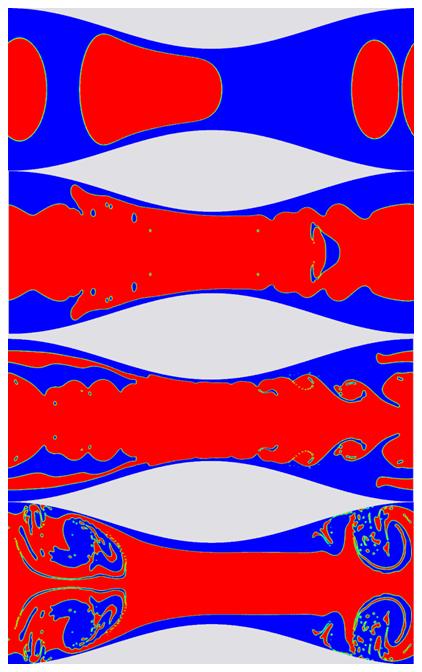Multiphase flows of two or more immiscible fluids exhibit numerous phenomena with intrinsic scientific interest and important practical applications: the production of oil from the ground, its water-facilitated transportation through pipelines, and its chemical transformation in packed-bed reactors. The overall applicability and performance of operations involving flows of two fluids are strongly dependent on their interface shapes. So, we must develop an understanding of the effects of the bulk properties and flow conditions on the interface evolution. Our motivation for studying the two-phase flow in a circular tube with sinusoidal variation in its cross-section is that this is the simplest of the shearing flows of two fluids, which can adequately approximate the flow that takes place in a packed-bed reactor and, more generally in porous media. In such reactors inertial, viscous and capillary forces are all comparable in magnitude and none can be neglected a priori. The fundamental mechanisms that give rise to the different flow regimes are rooted at the scale of the pore, where the two-phases flow and compete for the available space. Blood flow in a flexible vein has been simulated using appropriate constitutive models in a similar geometry.

Flow of highly viscous liquid (in red) through a low viscosity, lubricating liquid (in blue) in a constricted and periodic tube with increasing flow rates (from top to bottom).



